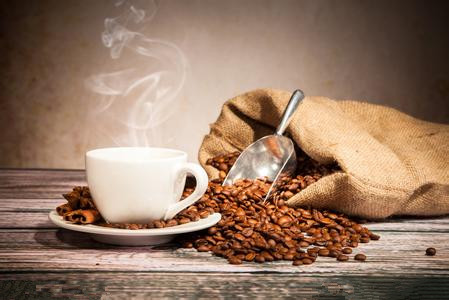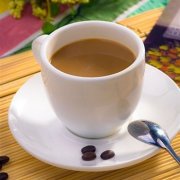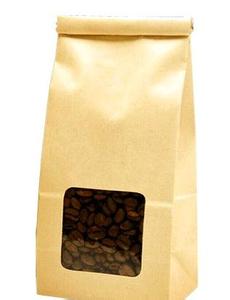Coffee brewing skills are the key to brewing top espresso.

In order to brew the top espresso, I think the blending and fusion of [4 M] is very important.
The first is [Mistura]. It means the combination of coffee beans. In Italy, espresso beans should be combined with at least five kinds of beans.
The coffee bar chef must know that the coffee beans he uses are a combination of those beans. This is to know what your own espresso tastes like. Only when you have a deep understanding of coffee beans can you explain it clearly to the guests. 'what kind of coffee beans do you use in your shop?' But when guests ask this question, if the answer is "not clear", I think it will be very difficult to let more people know the delicacy of espresso. Therefore, when choosing coffee beans, be sure to ask the industry for relevant information.
Setting of bean grinder and coffee maker
The second M refers to [Macinino]. That is, the grinding method of coffee beans. The ideal state of coffee powder is to brew 20cc-35cc espresso in 20 to 30 seconds when brewed with 7G coffee powder. In order to achieve such an ideal state, it is necessary to find out the most suitable grinding method. Because this has something to do with the adjustment of the bean grinder, the so-called suitable grinding method will be different depending on the type of coffee beans used.
First try to cook it once, and if it is finished in less than 20 seconds, you can adjust the scale a little bit. On the contrary, if the espresso is just ticking down and it takes more than 30 seconds to finish, thicken the scale a bit. It is important to note that after changing the scale, the re-ground coffee powder is unlikely to fall immediately. Because the grinder is still mixed with the debris from previous grinding, when adjusting the scale and re-grinding, grind for 10 seconds to let the coffee powder left in the grinder fall off together.
In addition, before grinding, we should also pay attention to the amount of beans left in the storage tank above the grinder. If there is too much left, the coffee beans will be sucked into the milling cutter because of the overweight, but on the contrary, if the residue is too little, the grinding situation and the amount of coffee powder dropped will be more or less the same. Therefore, always keep 6-7 cups of beans in the storage tank. Please pay attention to this.
In addition, it is also important to set the weight of the handle of the bean grinder to 7g in advance. In addition to being able to keep the right amount of coffee powder falling into the handle of the filter each time, pull only once for each cup of coffee and pull the handle twice for two cups, so that the brewing work can proceed smoothly. After all, constantly pulling the handle will also cause a burden on the handle spring and easy to loosen.
Next, write down in advance that all the bean grinders can grind a few grams of coffee powder in a few seconds, so you can have an idea of how to get the coffee powder to fall into the chlorine handle.
The third M is [Macchina], which refers to the espresso machine. In order to be able to use 90 C boiled water, apply 9 air pressure, and brew espresso in 20-30 seconds, you must have a professional coffee machine with excellent performance. Espresso at about 90 degrees C, 9 pressure, can lead to the top tasteless. If the pressure is lower than 9, it will not only cause no taste, but also brew a white espresso. On the contrary, if the air pressure is too high, there will be miscellaneous smell, and the brewed espresso will also be hehe.
In addition, it is necessary to master the characteristics of the coffee machine. For example, the [CIMBALI] I use doesn't immediately pour espresso when it starts brewing. This is because the machine has a steam function, so it takes about 4-5 seconds for both sides to start cooking at the same speed. In order to make the steam performance of the machine play a greater effect in order to steam all the coffee powder, the coffee beans had better be ground.
The last one is [Mano]. It means the technician, that is, the coffee bar chef. Without a coffee bar maker who can carefully adjust the grinding condition of coffee beans and is familiar with the performance of the coffee machine, he will not be able to brew delicious espresso. However, it is not good to pay too much attention to the brewing process to make delicious espresso for the guests. In order to take into account the speed of service, I think it is better to grind a certain amount of coffee beans in advance, which can also ensure that 7g of powder is filled into the handle of the filter.
After filling your hands with powdered coffee, make it as quickly as possible. Because the filter itself has a certain degree of heat, if the coffee powder is kept in it for too long, the heat will reduce the quality of the coffee powder.
It is believed that many people can brew delicious espresso in order to use freshly ground fresh coffee powder.
But is that really the case? The freshly ground coffee powder has the heat and gas produced by friction, which is not only scorched but also smells when brewed with 9 air pressure and 90 degrees boiling water. In the past, I used to put the coffee powder ground with illy coffee beans for a week and then brew it for testing. As a result, not only can we brew coffee with beautiful color, but there is no change in taste. Because coffee powder usually takes more than a week to 10 days before it begins to stale.
Important Notice :
前街咖啡 FrontStreet Coffee has moved to new addredd:
FrontStreet Coffee Address: 315,Donghua East Road,GuangZhou
Tel:020 38364473
- Prev

How to tell if you are drinking a good cup of coffee
When my friend was trained in a coffee shop, she learned the difference between hot milk and steamed milk. If you drink hot milk and steamed milk at the same time, the difference between them is obvious. Steamed milk is sweeter, smoother and has more bubbles than hot milk. If you simply heat the milk, there will be a strange animal smell, a little like people in
- Next

Why do coffee beans have such a long name? Interpretation of Coffee Bean name
Why coffee beans have such a long name? Why is there a single item, deep roast and Italian style of coffee? Where did so many names come from? When you walk into a coffee store or open the website of a professional coffee and bean seller, you may be confused by the dazzling variety of coffee names. Why coffee beans have such a long name? Why is there a single item, deep roast and Italian style of coffee? How is this divided?
Related
- What is the meaning of lactic acid fermentation with coffee bean treatment?
- How to judge the state of foam by sound?
- How does the latte pull out the unicorn pattern? Come to get for a little trick to improve the flower pull!
- Will flower pulling affect the taste of the latte?
- Do you know the history of coffee?
- The difference between honey treatment and sun washing what is raisin honey treatment?
- What kind of milk can a novice use to make coffee foam to keep the foam longer? The correct method and skills of milking tutorial sharing
- Why do washed coffee beans taste sour? Flavor characteristics of washed Coffee
- Introduction to the skill of how to practice the size and height of water injection around the circle of hand-brewed coffee
- How do beginners practice coffee flower drawing from scratch?

